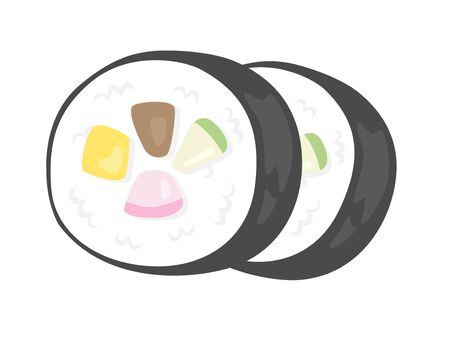Understanding Your British Guinea Pig’s Coat
When it comes to perfecting guinea pig grooming routines in the UK, the first step is truly understanding your cavy’s coat. Guinea pigs come in a delightful range of coat types, from the classic short-haired English and smooth American breeds to the luxuriously long-coated Peruvians and Shelties, and even the textured curls of the Rex or Teddy. Each variety found across Britain has its own unique grooming requirements, influenced not only by genetics but also by our island’s famously variable climate.
For example, long-haired breeds such as Peruvians and Shelties—quite popular among British enthusiasts—require much more frequent brushing to prevent matting, especially during damp autumns and muddy winters. Short-haired cavies, like the Abyssinian or standard English guinea pig, are easier to manage but still benefit from regular combing to keep their coats clean and healthy. The UK’s chilly, wet weather means that guinea pigs housed outdoors may need extra attention to ensure their fur remains dry and free from debris. Indoor pets aren’t exempt either: central heating can dry out skin and fur, so adapting grooming habits according to the season is essential for every conscientious British owner.
Recognising your guinea pig’s specific coat type—and how it interacts with local conditions—is crucial for tailoring your grooming routine. Not only does this help maintain their adorable appearance, but it also supports overall health and happiness throughout all of Britain’s seasons.
Essential Grooming Tools for UK Pet Owners
Grooming your guinea pig isn’t just about keeping them looking dapper; it’s about health, comfort, and bonding too. Across Britain, there’s a growing range of grooming tools tailored to suit the needs of all piggies, whether you’re raising a short-haired smooth coat or a long-locked Sheltie. Here’s a comprehensive look at what works best for British owners, where to find these essentials, and how to choose the right tool for your guinea pig’s unique coat.
The Best Brushes & Combs for British Guinea Pigs
| Tool | Best For | Where to Buy in the UK | Top Features |
|---|---|---|---|
| Soft Bristle Brush | Short-haired breeds (e.g., American, Rex) | Pets at Home, Wilko, Amazon UK | Gentle on sensitive skin; removes loose hair |
| Slicker Brush | Long-haired breeds (e.g., Peruvian, Sheltie) | Pets Corner, The Range, Jollyes | Tackles tangles; stimulates skin oils |
| Metal Comb (Wide-tooth) | Thick or matted coats; curly breeds | Etsy UK, eBay UK, Local pet shops | Detangles knots without pulling |
| Nail Clippers (Small Animal) | All breeds | Pets at Home, Animed Direct, VioVet | Curved blades for safe trimming |
| Flea Comb (Fine-tooth) | Checking for mites or debris in any breed | Pets at Home, Amazon UK | Catches fine dirt and tiny pests easily |
Selecting Tools by Coat Length & Type
If you keep short-haired cavies like Abyssinians or Teddies, a soft bristle brush is your staple—great for weekly sessions and ensuring minimal fur loss around the home. Long-haired guinea pigs need more commitment: slicker brushes and wide-tooth combs help prevent matting and keep those flowing locks luscious. For curly breeds such as Texels, a gentle metal comb works wonders through stubborn tangles without causing distress.
Where to Shop Locally & Online in Britain
You’ll find most grooming tools at high street pet retailers like Pets at Home or Jollyes. Independent pet shops often stock niche or specialty items—perfect for rare breed owners who want something extra gentle or eco-friendly. Online platforms such as Amazon UK and Etsy UK are brilliant for comparing reviews and finding innovative accessories that aren’t widely available in-store.
![]()
3. Safe Bathing Practices in the British Climate
Bathing your guinea pig is sometimes necessary, but it requires careful attention—especially with Britain’s cooler, often damp weather. Here’s a step-by-step guide to ensure a safe and stress-free bath for your furry companion.
Step 1: Choose the Right Moment
Select a warm, draught-free room for bathing. Avoid days when it’s particularly chilly or humid, as rapid temperature changes can cause illness. If possible, bathe during midday when your home is at its warmest.
Step 2: Gather Essentials
Prepare a shallow basin with lukewarm water (never hot or cold), a small animal shampoo suitable for guinea pigs (never use human products), a soft flannel or sponge, and plenty of fluffy towels. Have a hairdryer on hand if needed, but always use it on the coolest setting.
Step 3: Gentle Washing Technique
Gently lower your guinea pig into the water so their feet touch the bottom—never submerge them fully. Use the flannel to carefully wet and lather only the areas that need cleaning, such as muddy paws or soiled fur. Avoid getting water in their ears, eyes, and nose.
Step 4: Thorough Rinsing
Rinse away all shampoo with fresh lukewarm water using another clean flannel. Any residue can irritate their delicate skin.
Step 5: Drying and Warming Up
Immediately wrap your guinea pig in a dry towel and gently blot away excess moisture. If your pet tolerates it, use a hairdryer on low and cool settings, keeping it at least 30cm away from their body. Ensure they are completely dry before returning them to their enclosure.
Tips for British Weather
With the UK’s unpredictable climate, never let your guinea pig air-dry—they can quickly become chilled, leading to respiratory problems. Keep windows closed during and after the bath, and provide extra bedding for warmth post-grooming. Always monitor your guinea pig for signs of stress or discomfort throughout the process.
Avoid Common Pitfalls
Bathe only when absolutely necessary—over-bathing strips natural oils from their coat. Never rush the process; patience ensures safety and comfort for your beloved pet. With these steps tailored for British conditions, you’ll keep your guinea pig happy, healthy, and beautifully groomed all year round.
4. Detangling, Trimming, and Tackling Seasonal Shedding
Guinea pig grooming is not just about keeping your cavy looking presentable; it’s a vital part of their health routine, especially for British owners facing the unpredictable weather and distinct seasonal shifts. Let’s explore how to tackle tangles, trim safely, and prepare for increased shedding as the UK climate changes.
Detangling Matted Fur
Matted fur can quickly become a problem, particularly for long-haired breeds like the Peruvian or Sheltie guinea pigs. Always begin by gently teasing out any knots with your fingers before introducing a wide-toothed comb. Work slowly from the tips toward the roots to avoid pulling on sensitive skin. If mats are stubborn, consider using a small amount of guinea pig-safe detangler spray (never human hair products) and always reward your piggy with a favourite treat afterwards to keep grooming sessions positive.
Safe Trimming Techniques
Regular trimming is crucial, especially around the rear end where soiling is common. Use round-tipped safety scissors designed for pets, ensuring your piggy is calm and secure—wrapping them in a soft towel can help prevent sudden movements. Trim small amounts at a time and never cut too close to the skin. If you feel unsure, ask your local vet nurse or an experienced guinea pig groomer for a demonstration—many British rescue centres offer grooming advice days.
Preparing for Seasonal Shedding in Britain
The UK’s changing seasons mean your guinea pig will likely shed more in spring and autumn. Increased daylight hours trigger moulting, which can leave both your pet and your home covered in fluff! Frequent brushing during these periods is key to preventing matting and digestive issues caused by hair ingestion.
| Season | Shedding Level | Recommended Actions |
|---|---|---|
| Spring/Autumn | High | Brush daily with a soft slicker brush; check for mats every other day; increase vitamin C-rich veggies to support skin health. |
| Summer/Winter | Moderate/Low | Brush 2-3 times weekly; monitor coat condition; keep bedding clean and dry to reduce risk of fungal infections. |
By integrating these detangling, trimming, and shedding strategies into your regular routine, you’ll ensure your guinea pigs stay comfortable no matter what British weather brings—and strengthen the bond between you and your little companions.
5. Nail Care and Ear Cleaning for British Piggies
When it comes to guinea pig grooming, keeping those tiny toes and adorable ears in tip-top shape is crucial for their comfort and health. Whether you’re housing your piggies indoors or giving them a taste of the great British outdoors, regular nail trims and ear checks should become part of your routine. Overgrown nails can curl painfully or snag on soft bedding—especially common in UK homes with plush fleece liners or hay. To avoid this, set aside time every fortnight for a gentle nail trim. Use small animal nail clippers, ideally after a bath when nails are softer. If your piggy has dark nails, a torch (or “torch” as we say in Britain) can help you spot the quick and prevent nicks.
Simple Steps for Safe Nail Trimming
Settle your guinea pig comfortably on your lap or ask a family member to hold them securely. Trim just the very tip of each nail, taking care not to cut into the pink quick. In case of an accidental nip, keep some styptic powder or cornflour handy to stop any bleeding—both are easy finds at most UK chemists.
Ear Checks for Urban and Countryside Cavies
Guinea pigs’ ears are naturally delicate and prone to wax build-up, especially if they spend time rooting around in garden runs where dust or pollen might settle. Once a month, gently check their ears for dirt, redness, or unusual smells. A cotton pad dampened with warm water (never cotton buds inside the ear canal!) can be used to wipe away surface dirt. If you notice excessive wax or any irritation, it’s best to pop down to your local vet—many British veterinary clinics have experience with small furries.
General Health Monitoring
While tending to nails and ears, take the opportunity to give your guinea pig a quick health MOT: check their skin for lumps or bald patches (sometimes caused by mites common in our damp UK climate), peek at their teeth for overgrowth, and weigh them regularly using kitchen scales. Documenting these details in a little diary—perhaps on a rainy afternoon—helps you spot subtle changes and keeps your cavy cheerful whether they’re lounging in a London flat or frolicking in a Yorkshire garden.
6. Bonding Through Grooming: Building Trust with Your British Guinea Pig
Turning Routine into Relationship-Building
For many British guinea pig owners, grooming is about far more than just keeping coats clean and tidy; it’s a cherished opportunity to build trust and strengthen the bond between you and your piggy. The gentle routine of brushing, nail clipping, or even a spot bath can be transformed into a positive experience that your guinea pig looks forward to.
Creating a Calm Atmosphere
UK guinea pig experts recommend choosing a quiet time of day when your pet is naturally calm—often in the early evening after teatime. Softly spoken words in a soothing tone, perhaps paired with familiar British tunes on the radio, can help reassure your cavy. Laying out all grooming tools beforehand avoids unnecessary fuss, creating a smooth flow from start to finish.
Using Treats Wisely
Nothing says “good job” to a British guinea pig quite like a tasty treat of cucumber or dandelion leaf. Use small pieces as positive reinforcement throughout the grooming session, especially after tricky tasks like brushing behind the ears or trimming nails. This association encourages your guinea pig to see grooming as something rewarding and pleasant.
Listening to Local Insights
Seasoned UK owners suggest starting with brief sessions—just five minutes at first—and gradually increasing the length as your guinea pig becomes more comfortable. Many also recommend talking softly about everyday things: “How’s the weather in Leeds today?” or “Shall we watch the telly later?”—your familiar voice adds comfort and reassurance.
Recognising Trust Signals
A relaxed guinea pig might close its eyes, quietly purr, or even lie down during grooming. If your cavy seems fidgety or tries to escape, take things slowly and offer reassurance rather than forcing the process. Respect for their boundaries is key to building mutual trust.
Making Memories Together
Over time, these shared moments become treasured rituals for both of you. As many UK owners will tell you, there’s nothing quite like seeing your guinea pig snuggle into your lap, trusting you completely during their pampering session. By approaching grooming as an act of care and companionship, you’ll not only keep your cavy looking tip-top but also nurture a truly special friendship that’s uniquely British.


